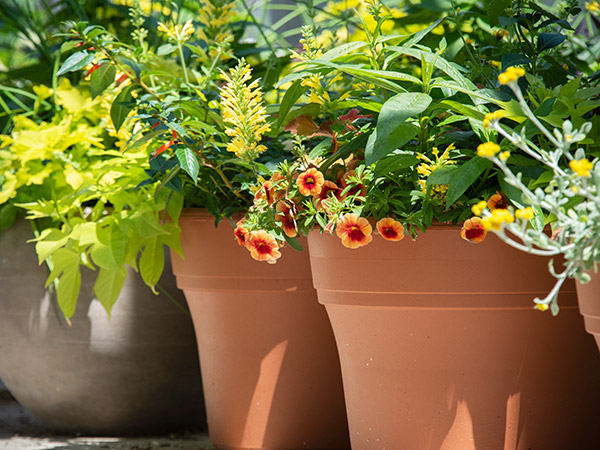
To promote a second, late-summer flower show, cut back, shear, or remove flower spikes from the following early blooming perennials: catmint, geraniums, salvia, and delphiniums.
Annuals in containers and hanging baskets may require daily watering during hot or windy weather. Continue to fertilize container plants with half-strength balanced liquid, but avoid applying in the heat of the day or during long, hot dry spells. Always water plants before fertilizing.
Remove spent flowers or seedheads of daylilies immediately to conserve plant energy.
Monitor foliage of densely planted annuals and perennials that might show fungal attacks due to cool, damp weather earlier this season.
Continue to pinch out new growth of tall sedums, asters, and chrysanthemums until the middle of the month.
Stake tall plants, if necessary, by tying with soft nylon ties.
Continue to guide clematis vines and all other soft-stemmed vines to their supports.
Make note of empty spots in borders that might benefit from planting summer-flowering bulbs next year.
Seeds of perennials can be sown directly into the garden at this time. Note their location to avoid accidental "weeding" next spring.
If necessary, dig and divide Oriental poppies as their foliage yellows and dries. Always plant poppies in sunny, well-drained areas. Avoid moving them, if possible. Since poppies fade out by midsummer, plant annuals or later-blooming perennials in front of them to conceal their unattractive yellowing foliage.
The lush greenery that grew abundantly during a rainy spring might become a target for insects. Monitor closely but avoid drastic action or strong chemicals until insects are correctly identified. Many, like aphids, will go away with a strong stream of water from a hose. Aphids have many natural enemies and are rarely cause for harsh pesticides. When in doubt, visit Plant Information at the Chicago Botanic Garden.

